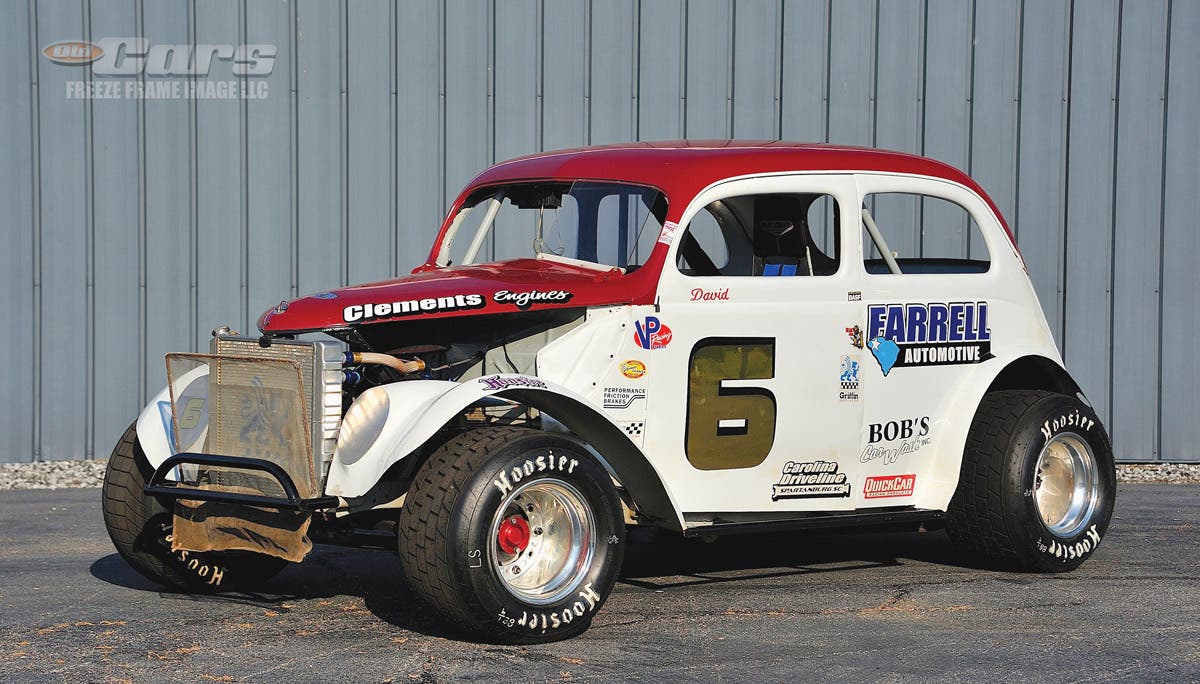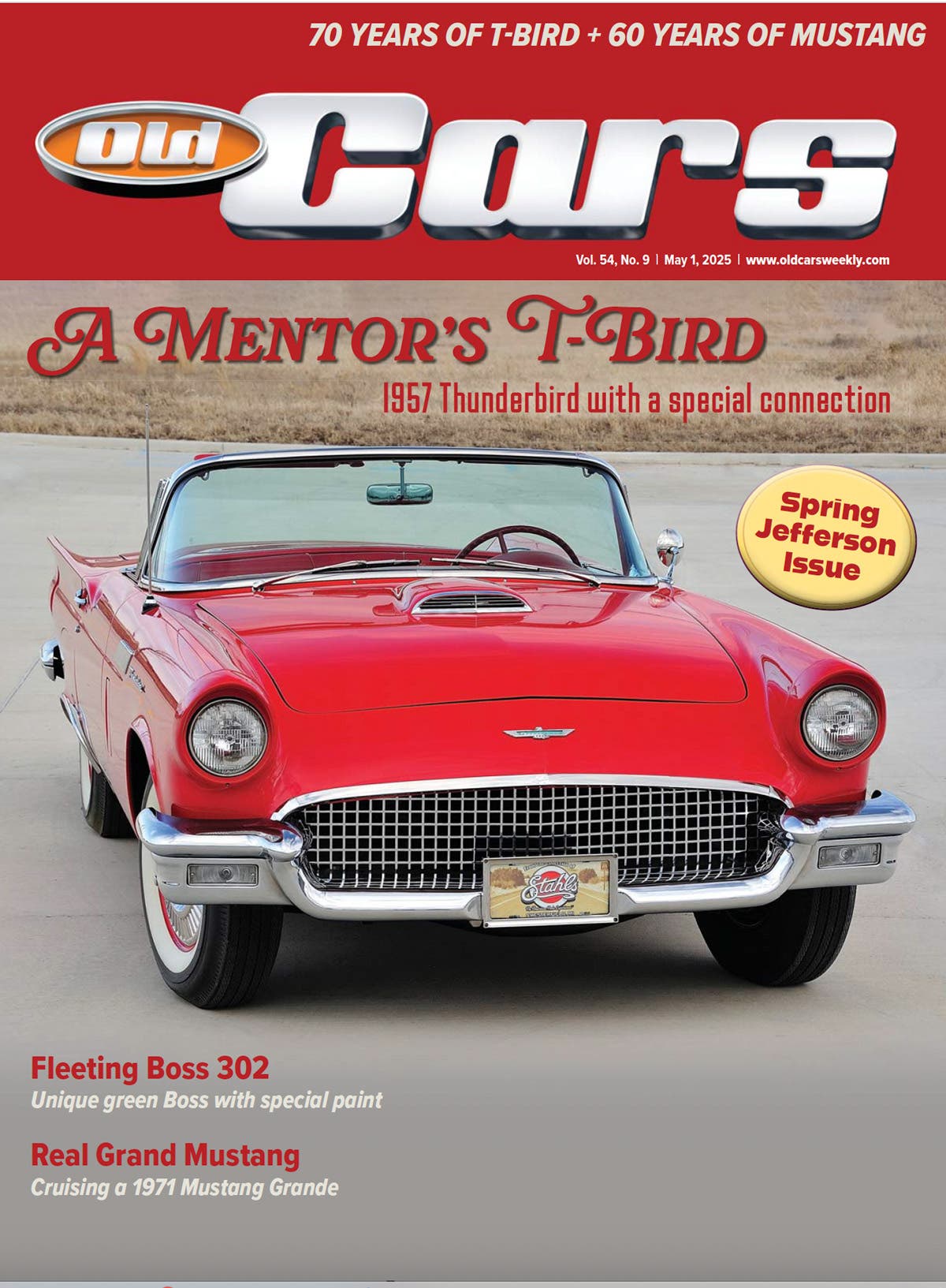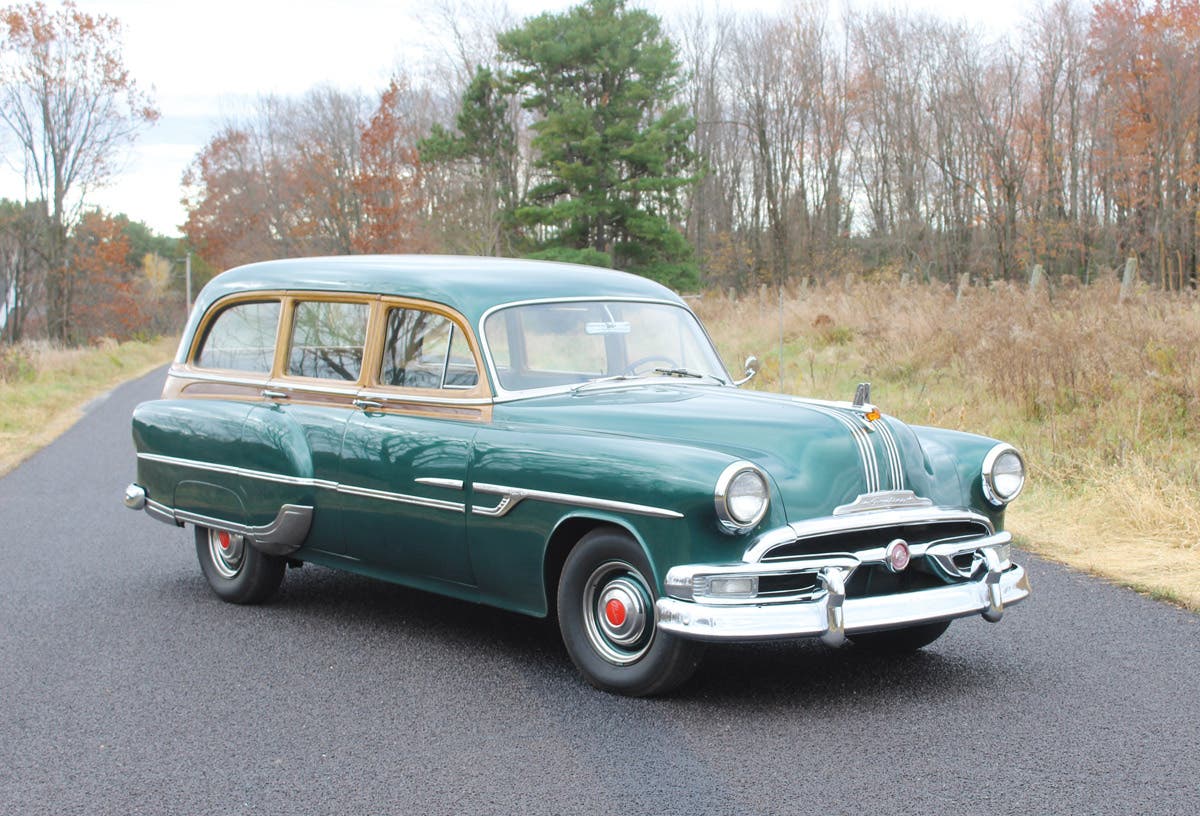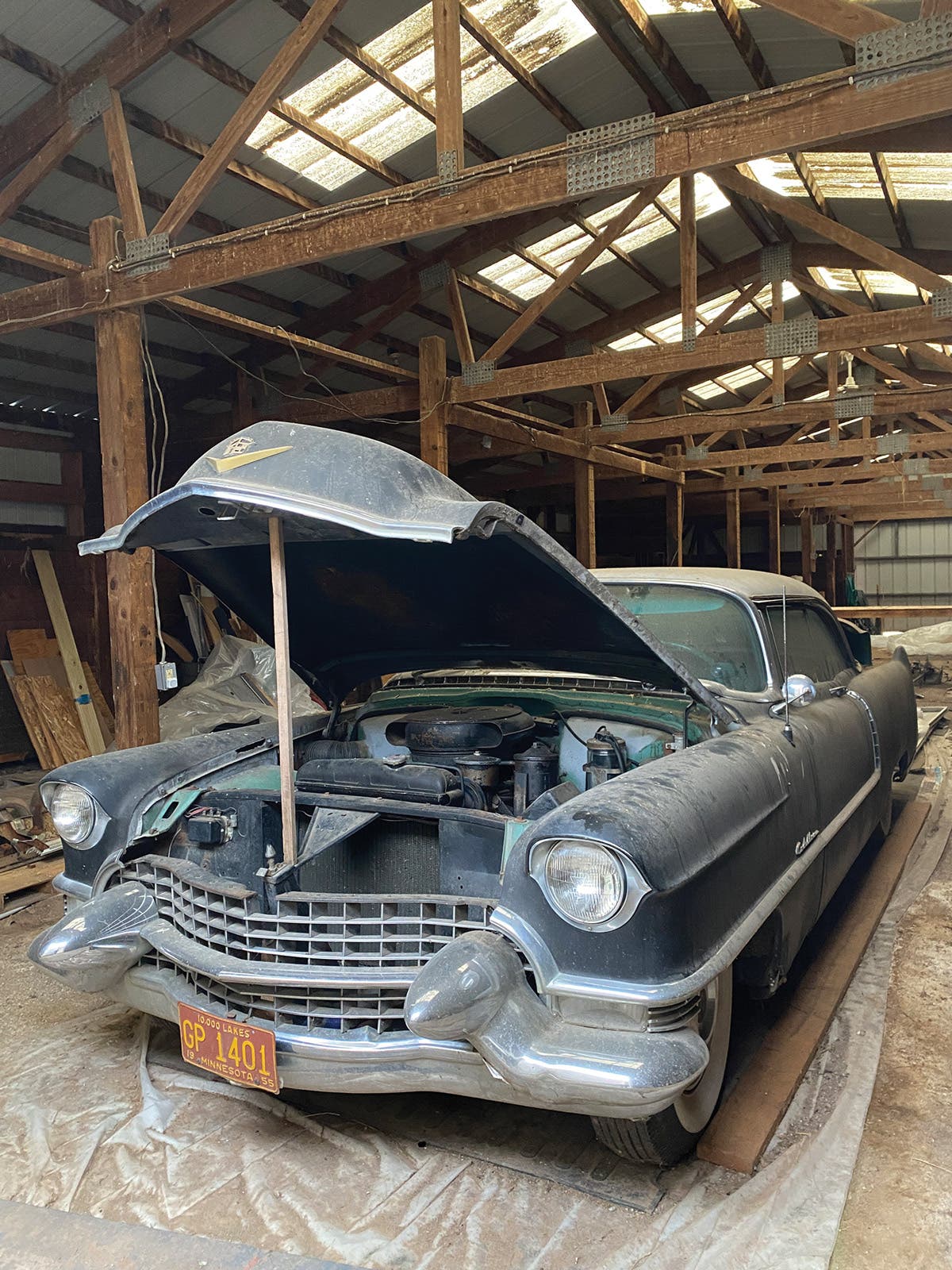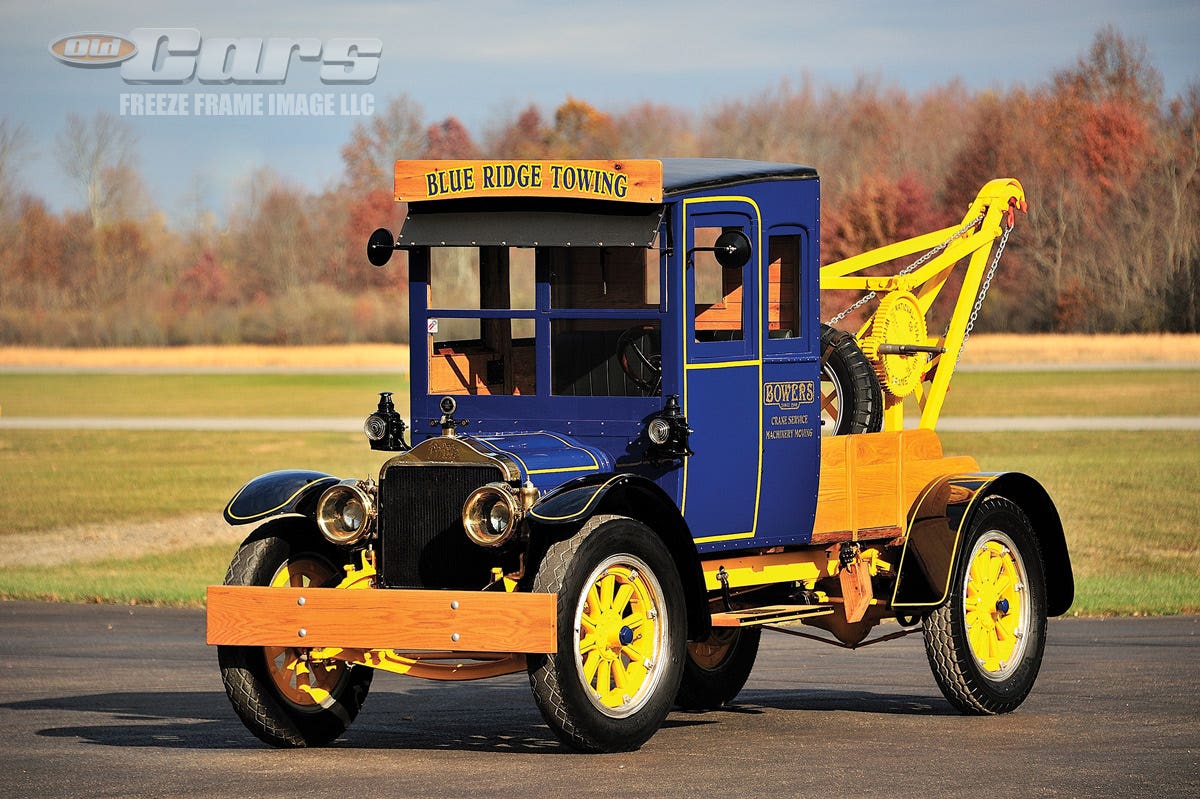Car of the Week: 1958 Dodge Royal Lancer
Every car guy has their weak spot, and for Chris Cutts it’s big fins. Huge, gaudy, MoPar fins. Cutts can’t help himself, and it’s an affliction that’s been with him for years.
Story and photos by Brian Earnest
Fins have always been “in” for Chris Cutts.
Every car guy has their weak spot, and for the Wild Rose, Wis., resident, it’s big fins.
Huge, gaudy, MoPar fins. Cutts can’t help himself, and it’s an affliction that’s been with him for years.
“I was into these cars before it was cool, even before my wife [Beth] liked them,” he laughs. “It would have been mid-'80s I started driving a four-door sedan, a 1960 Chrysler Windsor and, of course, everybody else had Camaros and stuff, and in high school I had this great big 21-foot-long Chrysler!”
That one Chrysler multiplied into a fleet of cars in various states of need. Some of them Cutts restored. Some of them he kept for a while and sold, and some he scavenged for parts. For quite a few years, fins were popping up all over his property, but eventually, only one of the cars was left: his 1958 Dodge Royal Lancer two-door hardtop. Even Cutts admits it’s a bit of an unusual choice to have hung onto and put so much time and effort into, but he and the beautiful pink-and-gray coupe are stuck with each other.
“After that first Chrysler I got a few others and rubbed on them, and did some work on them, and then this one came up for sale and I decided to buy it,” said Cutts. “Through the years of [me] growing up, it sat in the barn, then sat behind the barn, and then sat inside somebody else’s garage … Then it would have a tarp on it, then it would be outside, then it would be inside a nice garage, then outside again. I kind of didn’t treat it very well for a long time.
“I tried to sell it a couple of times. I was trying to get out of cars. I got rid of all the other ones and this was the last one and it just didn’t want to leave.”
Eventually, one of his car buddies, the late Bob Steele, convinced Cutts to quit procrastinating and restore his ’58 Dodge. By that time, the car was riddled with problems, and there would be no quick fixes. Cutts didn’t seem to mind. He enjoyed the challenge of completely rebuilding the finned hardtop, even if it was a little tougher than he envisioned. Cutts and Steele turned it into a tag-team effort, which began with a lot of metal fabrication.
“When we had it bead blasted, it was in pretty tough shape. It looked bad. It was never dinged. It was always a straight car, but when we got it back from the bead blaster it looked like Swiss cheese. It was really full of holes. It was totally gone. It was definitely a Chrysler product!” Cutts said.
“There was a lot of work to do. There was a lot of fabrication, a lot of welding. But it’s all steel. It was a three-year process. We had to make some new parts — you know you can’t buy a lot of the parts for these things, and there are no body panels at all.”
Cutts re-created the floor pans from scratch and got handy at building dyes to create other various parts. “I even made a couple dyes out of wood, and I just used them one time, but they did the job,” he recalls.
Steele helped with the assembly and engine work. That included rebuilding the car’s original 325-cid Red Ram V-8, which is attached to a push-button automatic transmission.
While the Dodge’s body was full of holes, the interior — white-and-gray vinyl seats and black dash and carpet — was already done, according to Cutts. “The interior is either original or very early restored, long before I had it. The interior is in great shape,” he noted.
A local shop did the final bodywork and paint. Cutts thought long and hard about the paint scheme he wanted before settling on a final look. “The car was originally yellow with a copper top and trunk and fins, and with the light yellow the chrome got all washed out,” he said. “You wouldn’t see the chrome, and these Dodges are very ‘chromey’ cars. So we paged through the color codes and I wanted two-tone and I wanted something that would catch photographs.”
Cutts eventually settled on a two-tone combination of Desert Rose from 1959 for the trunk and hood, and a Gunmetal Gray offered by Dodge in 1971 for the top, fins and trunk lid. It’s not exactly factory correct, but it looks the part and turned out even better than Cutts had hoped. “Actually they did have a similar color scheme [from the factory] and that’s what I was going with,” he said. “But you don’t hardly ever see those.”
You could say that about 1958 Dodges in general, and Royal Lancers in particular. Exact production numbers are a little fuzzy, but roughly 15,500 two-door hardtops, four-door hardtops and four-door sedans were built combined that year in Dodge’s middle-tier Royal line. The Royals were the least popular Dodges among new car buyers at the time, and restorers in recent years have gravitated more to the fancier top-level Custom Royals — if they can find them at all. The finned Dodge/Chrysler/Plymouth offerings of the day were not famous for their tolerance to rust, and hence many died young.
“You just never see these cars. A Chrysler product does [merit] a restoration because of their rarity. They just were not saved,” Cutts contends. “Especially the Dodges. Plymouths and Dodges were your bottom-level cars, and they got driven and they got used up. Ten years down the road they were pretty much rarities already. They were pretty much rotted out by then and way out of style: ‘Fins, oh my gosh, who wants fins?’ Of course I thought fins were the greatest things since ice cream [laughs]. I thought I was cool with these fins. Of course, I got teased a lot.
“You see so many advertisements or old pictures of demolition derbys and you’ll see all these Dodges upside-down. That’s what everybody was doing – ‘just get rid of ’em.’ They weren’t on the road for very long, which doesn’t help with availability of parts… It’s very hard to find stuff, which is why I have a few parts cars tucked away in the woods. With a restoration these days, you need two or three cars, just to make sure you can finish one up.”
As far as Cutts knows, a “little old lady” from Manitowoc, Wis., who bought the car new, was the only person who ever drove the ’58 Dodge much. The base price at the time would have been a very modest $2,814. She held onto the car for many years and eventually sold it to another man, who didn’t want to keep it and wound up dealing it to Cutts.
“At that time I had three 1960 Chryslers sitting in the yard, and I think I had a ’64 Imperial two-door hardtop. And there were parts cars, too,” Cutts recalled. “And then with all the trading and selling off, and getting rid of cars, this is the one that I kept. By advice from the wife, she suggested a few times hanging onto it, so she’s to blame for me still having it.”
By 1958, the Dodges were a year removed from Virgil Exner’s memorable “Forward Look” restyling of 1957. The “Swept Wing” MoPars were sleek and racy, with wraparound windshields, prominent fins, loads of chrome and jet-exhaust tail lamps. For 1958, dual headlamps and twin hood ornaments were introduced.
The Royal and Custom Royals all could be had with a variety of power train choices. The L-head 230-cid six-cylinder was standard. Less than 10 percent of the Dodges built for 1958 carried the sixes. The optional 315 V-8 had been bumped up to 325 cubes for 1958. It was good for 245 hp with two-barrel carburetion and 260 ponies if you went with the four-barrel, which was standard on the Custom Royal. The 361-cid D-500 offered 285 or 310 hp. The new 350-cid/295-hp Ram Fire V-8 was also on the menu.
The three-speed TorqueFlite automatic and two-speed PowerFlite were both optional, and both used push-button shifting on the dash to the left of the steering wheel. For the model year, 96.4 percent of all Dodges had automatic transmission; 62.5 percent had power steering and 34 percent had power brakes. Other options included power windows and seats, heater and air conditioner, Highway Hi-Fi automatic record player, windshield washer, whitewall tires and seat belts.
Cutts’ Royal Lancer still has manual steering, but he did add power brakes during the restoration. He also added dual antennas and changed the gearing on the rear end to improve his fuel economy. “It had a limited-slip rear end in it, but it was in pretty tough shape so we put in a 2.93 and we’re getting better mileage — we went from 11 miles a gallon to 15! Now we can afford to come to all the shows! … The car is actually very basic. It has a radio, and the TorqueFlite three-speed push-button shift. It’s one of the world’s strongest transmissions. They’re very good transmissions.”
Under the hood, the Royal Lancer wears Hemi heads from 1957. They are not exactly correct, but they are period and product correct, and have made the car more interesting at shows, Cutts says. “With Dodges you could put either head on. With Chryslers you could do that, but you’d have to machine some stuff to make the Hemi heads fit,” he said. “It was an easy choice. We had a Hemi engine sitting there. It was a 315. This one is a 325. The heads are the same, and it has probably a little better power, not that we’re drag racing or anything. It’s more of a talking piece. When you raise the hood and everybody sees these, it’s ‘Oh my, look at those fat heads on there!’ They are product correct, but not specific to this car.
“And it did come with a four-barrel manifold, which was an option, but not very [common]. It was actually an option everybody desires because now it’s the original cast-iron manifold. That was kind of a special deal there.”
Chris and Beth have plenty of fun these days cruising the Wisconsin back roads in their flashy Dodge. They regularly show up at local cruise nights and displayed the car at last summer’s Iola Old Car Show in Iola, Wis. After hanging on to the car for so long and putting so much time and effort into it, Chris doesn’t pass up the chance to drive his Royal Lancer whenever he gets time. No trailer needed.
“It drives like a great big boat, but it’s actually a snappy car,” he laughs. “Everybody says, that must weigh 3 or 4 tons. No, modern cars today are actually heavier than these. It’s amazing.
“This is a 3,800-lb. car, and it floats down the road. It’s a little more nimble than a Chrysler would be. For an old car, they are a floating magic carpet ride.”
_______________________
Show us your wheels!
If you’ve got an old car you love, we want to hear about it. Email us at oldcars@aimmedia.com
*As an Amazon Associate, Old Cars earns from qualifying purchases.



